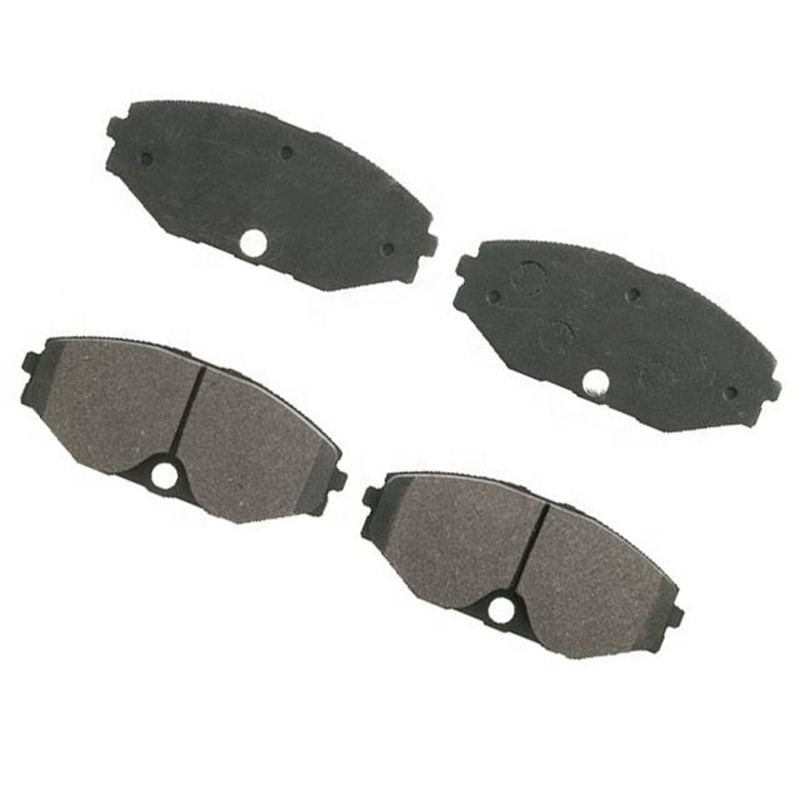Brake Pads: The Unsung Heroes of Automotive Safety
2023-10-17
Introduction:
When it comes to automotive safety, few components play a more crucial role than brake pads. As a vital part of the braking system, these small yet mighty devices are responsible for bringing our vehicles to a safe and controlled stop. In this blog, we will delve into the world of brake pads, exploring their importance, composition, and the advancements that have made them an integral part of modern automotive technology.
The Function of Brake Pads:
Brake pads are friction materials that work in tandem with other brake system components to convert the vehicle's kinetic energy into heat energy, ultimately slowing down or stopping the wheels. When the brake pedal is pressed, hydraulic pressure is applied to the brake caliper, which then squeezes the brake pads against the spinning brake rotor. This friction generates the necessary stopping force.
Composition and Construction:
Brake pads are typically composed of several layers, carefully engineered to deliver optimal performance and longevity. The primary friction material is a composite mixture that includes various components such as organic materials, metallic fibers, and sometimes ceramic materials. These materials are bound together with a resin or adhesive, forming a dense and durable pad.
Types of Brake Pads:
1. Organic Brake Pads: These pads are made from organic materials such as rubber, glass, and resins. They offer quiet operation, good initial bite, and low dust production. However, they may wear faster and generate more heat than other types.
2. Semi-Metallic Brake Pads: Semi-metallic pads contain metal fibers, usually steel, along with organic materials. They provide excellent heat dissipation, durability, and consistent performance across a wide range of temperatures. However, they tend to produce more noise and generate more rotor wear.
3. Ceramic Brake Pads: Ceramic pads are composed of ceramic materials, including clay and porcelain, combined with copper fibers or other reinforcement materials. They offer superior performance, reduced noise, less dust production, and longer lifespan. Ceramic pads also generate less heat, reducing the risk of brake fade. However, they can be more expensive than other options.
Advancements in Brake Pad Technology:
Over the years, brake pad technology has seen significant advancements, enhancing safety and performance. These include:
1. Low-Copper Formulations: To reduce environmental impact, many brake pad manufacturers have developed low-copper or copper-free formulations, ensuring compliance with regulations while maintaining high performance.
2. Ceramic Matrix Composites: The use of advanced ceramic matrix composites improves heat dissipation, reduces noise, and provides excellent braking performance even under extreme conditions.
3. Slotting and Chamfering: Brake pads may feature slots or chamfers on their surface, which help improve initial bite, reduce noise, and minimize brake fade by promoting better heat dissipation.
4. Brake Pad Wear Sensors: Some modern vehicles are equipped with wear sensors that monitor the thickness of the brake pads. When the pads wear down to a certain point, the sensors trigger a warning light on the dashboard, alerting the driver that it's time to replace the pads.
Conclusion:
Brake pads are essential components of any vehicle's braking system, ensuring safe and reliable stopping power. With advancements in materials and manufacturing techniques, brake pads have become more durable, efficient, and environmentally friendly. Regular inspection, maintenance, and timely replacement of worn-out brake pads are crucial to maintaining optimal braking performance and ensuring the safety of both the driver and passengers. Next time you hit the brakes and come to a smooth stop, remember to appreciate the unsung heroes that are brake pads.



